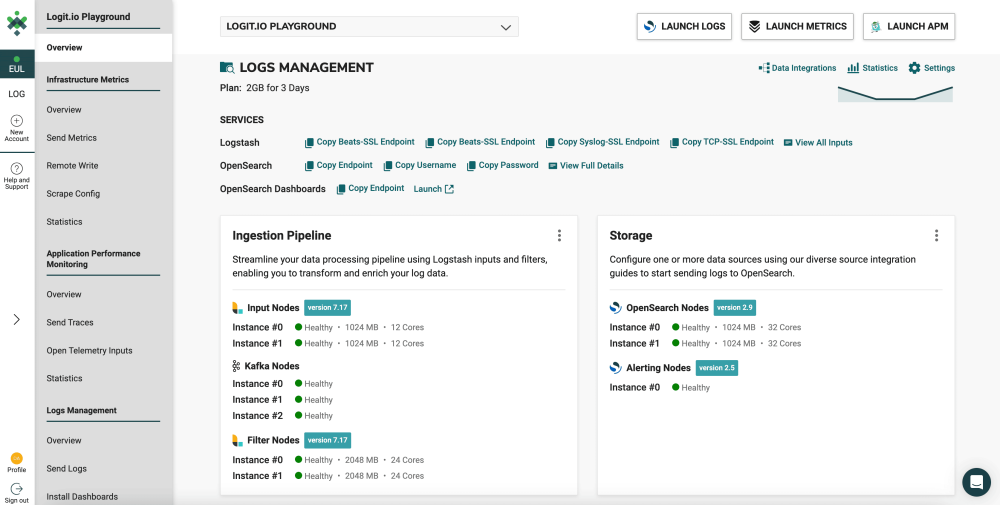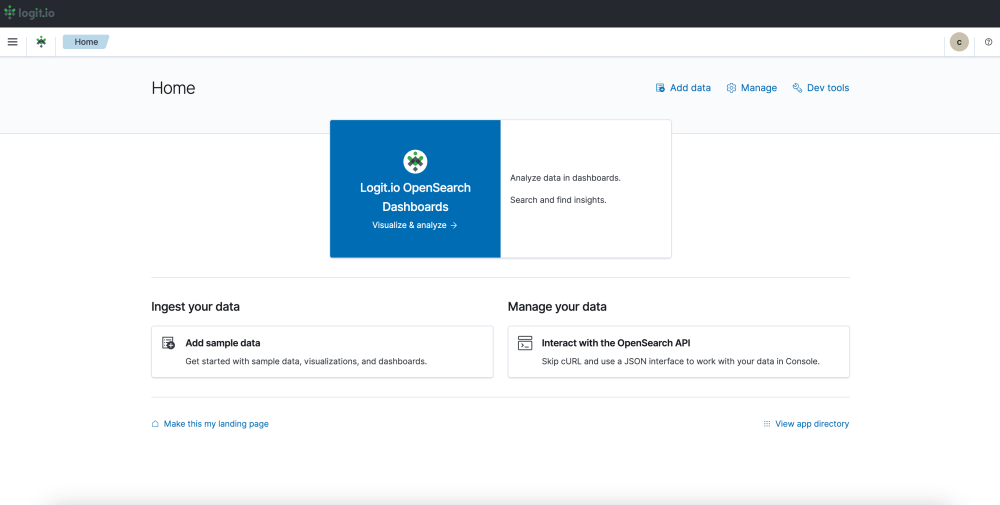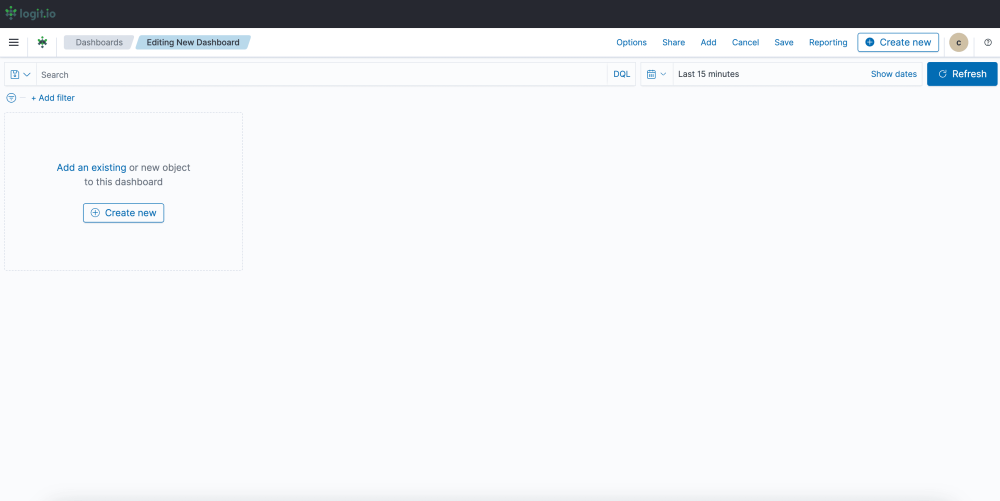Resources, How To Guides
9 min read
Last updated:
Debugging Python code is crucial for guaranteeing the uptime and performance of your application, and logging in Python is a great solution to streamline your debugging workflow. Python, a general-purpose programming language, includes a logging module in its standard library, offering a flexible framework for generating log messages from Python programs. The module allows applications to configure various log handlers and route log messages to them, enabling a highly flexible setup that can be tailored to handle a wide range of use cases.
Continuing with our series of ‘how-to’ guides, the latest edition is all about Python logging. We will discuss what it is, best practices and the benefits to be gained from conducting the practice, before detailing how to integrate Python with Logit.io, to start viewing your logs in our platform for enhanced analysis, monitoring, and debugging.
Contents
What is Python Logging?
Python logging is an in-built feature of the language Python, utilized by developers to track and record events during the execution of a program. The logging module will enable the developer to create log messages at different levels of importance: debug, info, warning, error, and critical. This allows monitoring of the behavior of the application, diagnosing issues, or maintaining the software over time. Python logging is configurable and allows developers to send log messages to a variety of outputs in a format that best suits their use. It has become an indispensable tool for debugging and performance monitoring to ensure the reliability of Python applications.
Python Log Levels
By using log levels users can define the severity of the event that is being logged. These log levels aid developers in categorizing log messages and controlling the output depending on the environment (development, testing, production). Below are the standard log levels in Python.
DEBUG
- Purpose: Utilized for diagnostic details. This level is commonly used to write the information that will be helpful for the developer if he wants to debug an application.
- Example Use: Logging variables' values, function calls, or detailed flow of execution.
- Severity: Low
logging.debug("This is a debug message")
INFO
- Purpose: Confirms that things are working as expected. It's commonly used for informational messages indicating, for example, the progress of an application at a high level.
- Example Use: Specifying that some work is done, like "User successfully logged in."
- Severity: Medium-Low
logging.info("This is an informational message")
WARNING
- Purpose: This would show that something unexpected happened, or indicative of some problem in the near future. The application is still working as expected, but something might need attention.
- Example Use: Logging low disk space or usage of a deprecated function.
- Severity: Medium
logging.warning("This is a warning message")
ERROR
- Purpose: To log more serious problems. It indicates that an error has occurred in some part of the application, but the application can continue.
- Example Use: Logging an error because a necessary file was not found or a database connection failed.
- Severity: High
logging.error("This is an error message")
CRITICAL
- Purpose: For critical error messages that may prevent the application from continuing to operate. This level is used to indicate a serious failure that requires prompt attention.
- Example Use: A logged message upon an application about to crash, or when a critical service is not available.
- Severity: Very High
logging.critical("This is a critical message")
While the standard log levels are typically sufficient, Python also allows you to define custom log levels if you need more granular control over logging in your application.
How to Write Logs in Python
You can use the built-in logging module to write logs in Python. This offers a flexible and standardized way to monitor events in your code. Firstly, import the logging module and configure it using logging.basicConfig(). This enables you to define the log level (e.g., DEBUG, INFO, WARNING, ERROR, CRITICAL, mentioned above), the log format, and the output destination (console or a log file). Once this has been configured, you can log messages with various severity levels using, the 5 examples listed above. Each log level represents the importance of the message, enabling you to filter logs based on the situation.
The Benefits of Conducting Python Logging
Firstly, a key benefit of conducting Python logging is that the logging module in Python is part of the standard library, which makes it easily available for various Python applications without additional requirements. This ease of use makes sure that developers will be able to swiftly put basic logging in place, even in small scripts or large complex applications. The module itself is designed in harmony with Python's philosophy of simplicity and readability, allowing developers to configure logging with a minimum amount of code and without sacrificing clarity and functionality. This makes it seamlessly integrate with the Python ecosystem and is the natural choice for monitoring and debugging Python applications.
Another advantage to be gained from Python logging is that it is a very flexible, customizable framework that meets various application needs. Application developers can define various log levels, such as DEBUG, INFO, WARNING, ERROR, and CRITICAL, that capture detailed information, helping to filter or prioritize the log messages. Besides that, the logging module allows for the creation of multiple loggers, handlers, and formatters. That enables the developer to implement routing log messages to different destinations, like files, a console, or remote servers, and to format these messages so that they may contain timestamps, module names, or even custom information. In this way, Python logging can be tailored to the specific needs of any project.
Additionally, Python logging provides a record of the runtime behavior of the application, which is very important for debugging and troubleshooting. Other than print statements that often remain in the application until debugging is complete, logging can remain in production code with no performance penalty and continued insight into the operations of an application. Logs capture valuable information about exceptions, warnings, and other notable events that can help diagnose problems in near real or post-event time. A developer can trace the history of actions that generated a problem, in trying to find and resolve the bug, by checking the log files.
Lastly, in Python applications, logging is not only about capturing errors but also about performance monitoring. A developer may log metrics about performance, like execution time for certain functions or memory usage, to find out where systems have either bottlenecks or inefficiencies. In this regard, continuous monitoring would optimize the code, especially for performance-critical applications like web services, data processing pipelines, and machine learning models. Based on such logs, a developer can make informed decisions about where refactoring needs to take place, algorithms should be improved, and resources should be better utilized to create a more responsive application.
Unlock complete visibility with hosted ELK, Grafana, and Prometheus-backed Observability
Start Free TrialPython Logging: Best Practices
Firstly, the logging module provides a highly configurable architecture for logging events using loggers, handlers, and formatters. Loggers capture the log messages, handlers send those messages to appropriate destinations, which may be files, consoles, or external services, and formatters define how to present the log messages. This separation of concerns will enable you to easily customize the logging behavior without touching the core logical part of your application. For example, this could be used to pipe error logs to a different file for easier analysis or to format logs with timestamps and other contextual information, which is important for debugging and monitoring.
Additionally, with Python logging, you should never be complacent with security concerns. Ensure that you are not logging sensitive information, such as passwords, API keys, or personally identifiable information. Accidental logging of sensitive data subjects logs to security breaches in cases of log exposure or poor handling. Instead, always sanitize or mask such sensitive data when logging, employing secure logging practices that ensure log files cannot be accessed by unauthorized parties. Also, logs should be stored in secure storage and access to them should be subjected to appropriate control.
Another best practice of Python logging is to implement log rotation. When an application has been running for quite some time, logs can grow considerably and consume significant disk space, becoming unwieldy. You should, instead, make sure to create a log rotation using the RotatingFileHandler or TimedRotatingFileHandler provided by the logging module. Log rotation automatically archives old log files and creates new ones based on size or time intervals so that log file sizes remain at manageable levels, and you do not use up all of your storage space. This practice would also make the logs tidier and, therefore, easier to review.
Lastly, it's crucial in modern applications, especially microservices or a distributed system, to have a centralized logging system. By centralizing logs, you can aggregate data from different parts of your application into one place, making it easier to monitor, search, and analyze logs. Tools like Logit.io, collect logs for centralized management. This will improve not only the efficiency of debugging and monitoring but also enable correlating events across various services or components.
Python Centralized Logging with Logit.io
Logit.io’s powerful log management solution is the ideal choice for monitoring and debugging Python logs. Our solution prioritizes transparency, users can choose from a range of cost-efficient pricing plans that are most suitable for their requirements with overage protection being included as standard across all plans. If you’re interested in finding out more about log management from Logit.io, don’t hesitate to get in touch or begin exploring the platform for yourself with a 14-day free trial.
Integrating Python Logs with Logit.io
To fully leverage the benefits of Logit.io, seamless and rapid data integration is essential. That's why we've created comprehensive, user-friendly integration guides for a wide range of sources within our documentation. For Python centralized logging, users will need to refer to the Python Logging Configuration guide to easily send logs from Python to their Logit.io Stack.
Visualizing Python Logs in Logit.io
Logit.io offers robust visualization options through its range of hosted open-source tools, including Hosted Kibana, Hosted OpenSearch Dashboards, and Hosted Grafana. These tools provide enhanced flexibility for comprehensive analysis, debugging, and monitoring of your Python logs.
After sending your Python logs to Logit.io, you can access and review them directly from the initial dashboard. For visualizing Python logs, we recommend starting with OpenSearch Dashboards, which can be conveniently launched from the 'Logs Management' page.
- Launch Logs: From the initial dashboard, select ‘Launch Logs’ at the top right of your screen or ‘Launch’ next to OpenSearch Dashboards.

- OpenSearch Dashboards: After selecting ‘Launch Logs’ or ‘Launch’ you will arrive at the OpenSearch Dashboards welcome page. As you have already shipped logs from Python to Logit.io, select ‘Visualize & Analyze’.

- Visualization Options: From this page, you can choose either ‘Discover’ which allows you to search through your data to find insights, or ‘Dashboard’ which allows you to analyze your data in dashboards. For this guide, we will select, ‘Dashboard’.

- Create a Dashboard: After selecting ‘Dashboard’ you now need to select ‘Create’ towards the right of your screen and ‘Dashboard’ from the dropdown menu.

- Editing and Saving a Dashboard: From this page, you can edit your dashboard by adding existing panels and objects or creating new ones. To create a new object select ‘Create New’ from the left of your screen and choose your preferred data presentation type for viewing Python log data. Once you’ve added all the objects you desire, click ‘Save’ in the top right. Now you can visualize your Python logs in Logit.io.

If you've enjoyed this article why not read How to Integrate Serilog with Logit.io or How to Integrate Ruby with Logit.io next?
